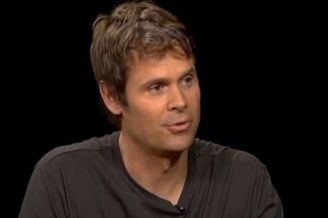Editor’s note: Tim Westergren is founder and chief strategy officer of Pandora. Follow him on Twitter.
Of all the activities at Pandora, witnessing the impact of our personalized radio on the careers of working musicians is the most gratifying. Over the last 12 years we have assembled over a million analyzed songs in the Music Genome Project, representing more than 100,000 artists, the majority of which are independent working musicians.
Today, more than 95 percent of those songs play every month. As Pandora’s listenership has achieved significant scale – now streaming more than 1.2 billion hours to about 60 million listeners every month – a very exciting vision is coming into focus for how personalized radio can improve the fundamental dynamics of this industry for artists.
What we’re beginning to witness is the potent combination of scale, data, and one-to-one communication. Since 2005, we have registered more than 175 million listeners in the U.S. In addition to ZIP codes, age, and gender, these listeners have shared their personal musical preferences to the tune of more than 20 billion “thumbs” up and down. Pandora has become a window into American music fans. Never before has there been a platform capable of delivering the music of tens of thousands of artists to the right audience at scale; and never before has there been a platform of this size and sophistication to activate fans on a national and local level.
We see Pandora as a powerful resource to be shared with artists to help them reach their fans and build successful careers. We’ve begun sharing our data with a steady stream of artists who have come through our offices. When one artist came through recently, we sat down and looked at the map of their top 10 markets on Pandora. They told us that they only received traditional FM radio play in just one of these 10 markets. In other words, this popular band relies on Pandora, and not FM radio, in nine out of their top 10 markets.
When the lead singer of another band visited us last year, he learned that they had never toured in what Pandora showed was one their top markets – Salt Lake City. Since then, he reported back that the data was right: they booked a stop there for the current tour and played to a packed house of true super fans.
As live performance becomes an ever more important part of artist income, especially for independent artists, there is nothing more valuable than data and technology that can help artists expand the repertoire of cities where they can perform to sizeable crowds. The larger the number, the more often you can play without saturating any given market. That was always a great challenge when I was in a band. Cultivating a new market is a time-intensive and expensive proposition. The bands who did it were true road warriors and spent many years playing to virtually empty rooms.
One strategy bands employ is to open for local bands who have already established an audience (and reciprocate when that band comes to their home city). Technology now allows us to do that much more easily. Artists could use the intelligence of the Music Genome Project and the insights from listener thumbs to combine the fan bases of two complementary bands. It’s a perfect way to plot a joint tour – maybe even a traveling festival. We know that bookers are already making use of Pandora to book opening acts, but this kind of tool could make the process much more efficient.
And this isn’t just theoretical. We’ve experimented a number of times with this technology. In July we put on a show with Walk the Moon at the Key Club in Los Angeles. After sending emails to listeners that had thumbed up their music on Pandora that lived within driving distance of the club, almost a thousand people showed up. We’ve done the same for Aimee Mann, Dawes, Train, Portugal. The Man, Theophilus London, and more.
What makes this all the more exciting is when you consider that Pandora still only represents around 6.5 percent of total radio hours. What if Internet radio had 65 percent of the hours? Multiply these numbers by 10, and imagine a world in which every talented artist would be heard by all of the listeners who might like their music. And every time an artist played a show, all of the listeners in the vicinity of that show knew they were performing and had an easy way to buy a ticket. This has always been the great promise of the Internet and it’s within our grasp.
Pandora is on track to pay over $250 million in royalties to performers this year, but that represents just a small part of the benefit of Internet radio. Ultimately, artists thrive based on their ability to attract and cultivate a loyal fanbase – and there is no better place to find that fanbase than on radio where 80 percent of music listening still takes place. By adding connectivity, and the ability to communicate directly with individual listeners, Internet radio opens up a world of opportunity for all artists that has never existed before.
Everyone stands to gain from a large and healthy Internet radio industry that can truly put the power of data and technology in the hands of working artists everywhere.
